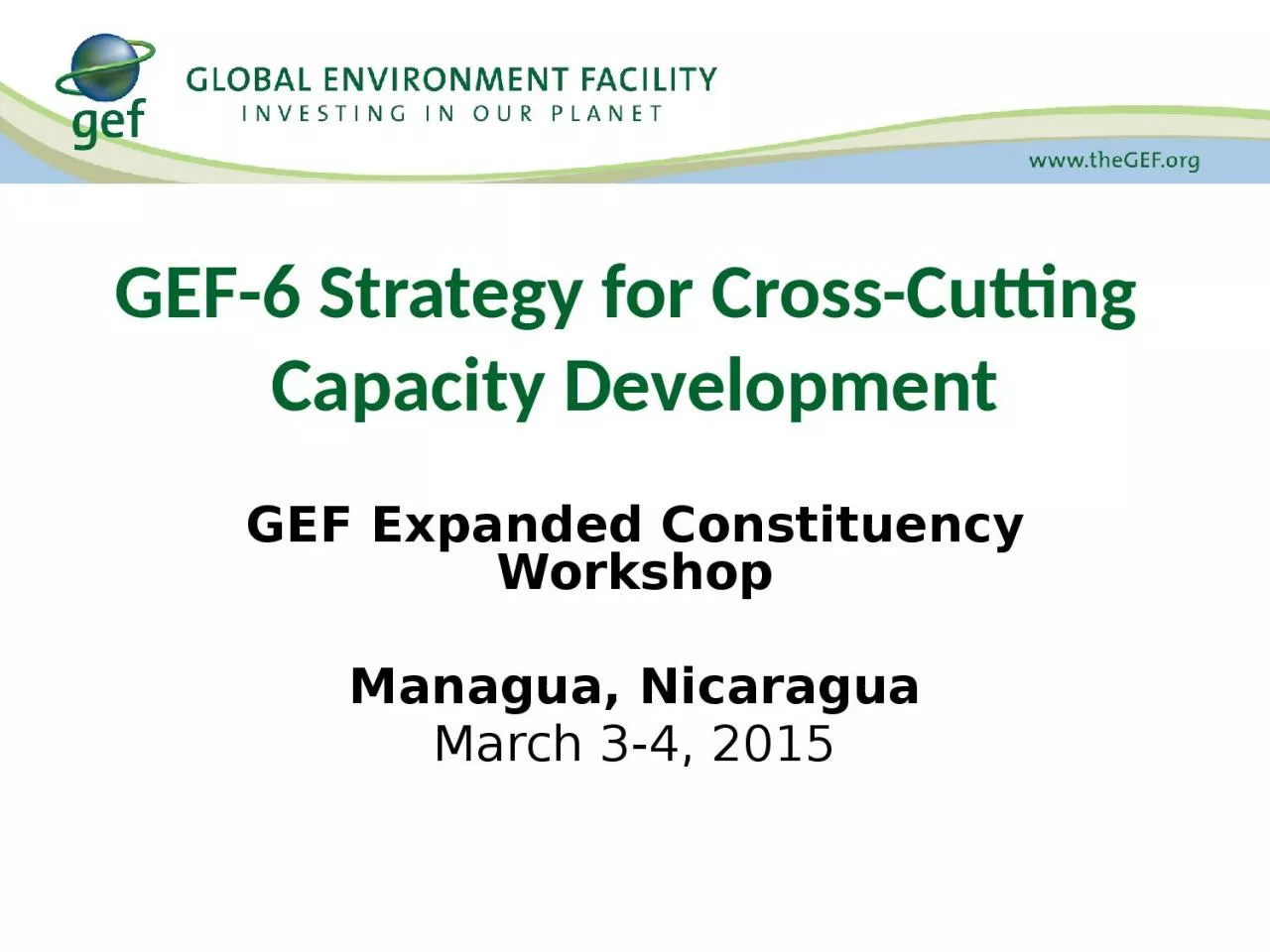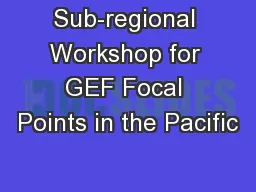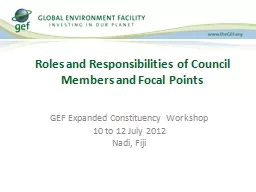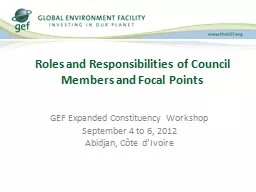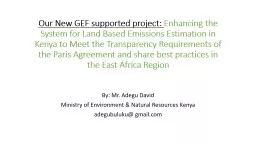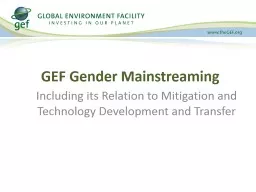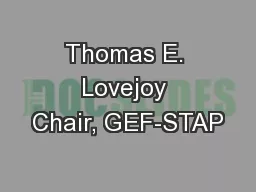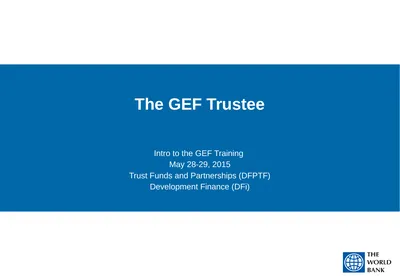PPT-GEF-6 Strategy for Cross-Cutting
Author : hadly | Published Date : 2024-01-29
Capacity Development GEF Expanded Constituency Workshop Managua Nicaragua March 34 2015 The process by which individuals organizations and societies strengthen
Presentation Embed Code
Download Presentation
Download Presentation The PPT/PDF document "GEF-6 Strategy for Cross-Cutting" is the property of its rightful owner. Permission is granted to download and print the materials on this website for personal, non-commercial use only, and to display it on your personal computer provided you do not modify the materials and that you retain all copyright notices contained in the materials. By downloading content from our website, you accept the terms of this agreement.
GEF-6 Strategy for Cross-Cutting: Transcript
Download Rules Of Document
"GEF-6 Strategy for Cross-Cutting"The content belongs to its owner. You may download and print it for personal use, without modification, and keep all copyright notices. By downloading, you agree to these terms.
Related Documents

